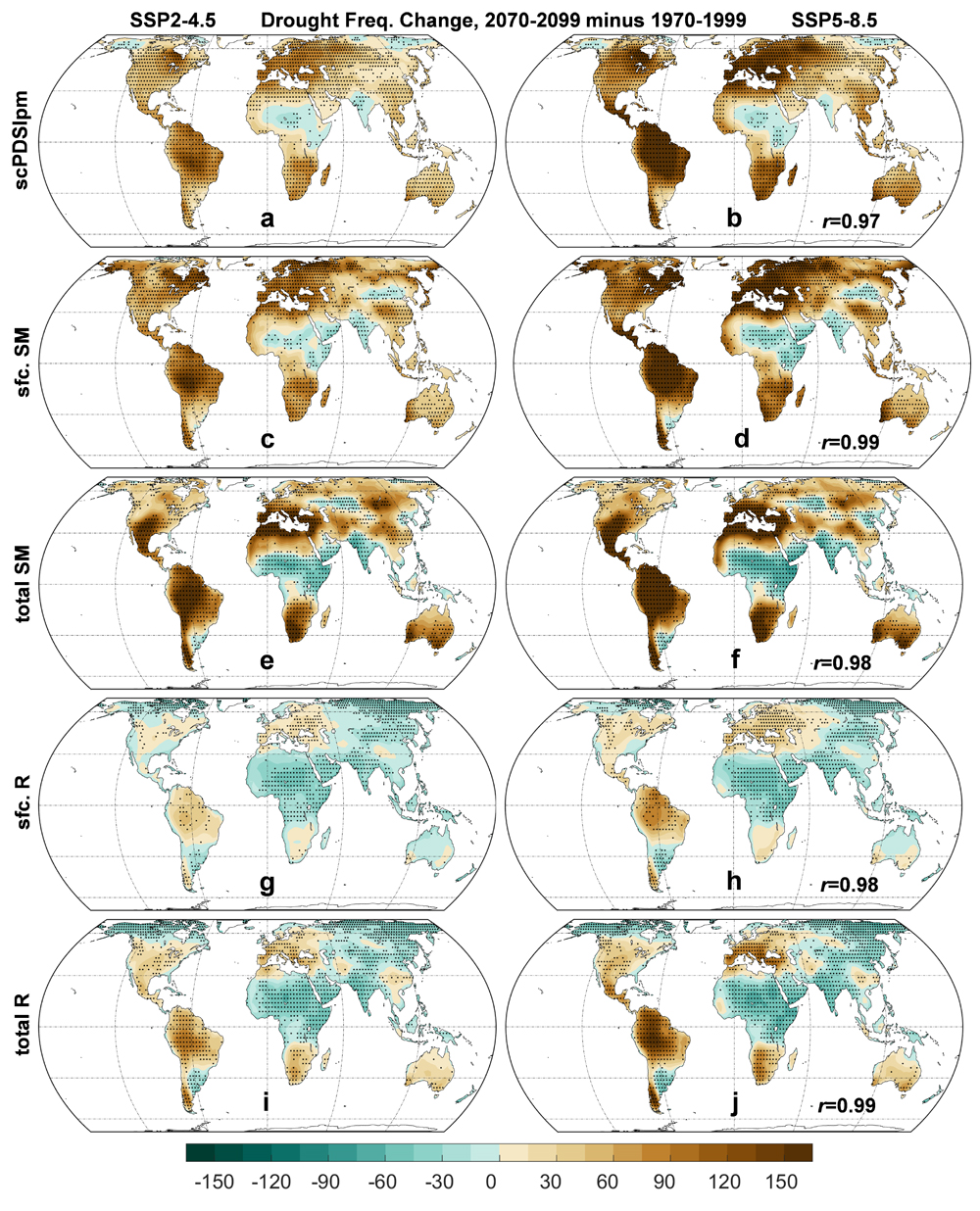Drought is among the most damaging natural hazards in the world, often causing severe losses to agriculture, ecosystems and human societies.
Historical records of precipitation, streamflow and observation-derived drought indices all show increased aridity since 1950s over several hotspot regions, including Africa, southern Europe, East Asia, eastern Australia, Northwest Canada, and southern Brazil.
"Climate model projections also suggest that drought may become more severe and widespread as the greenhouse gas-induced global warming continues in the 21st century," said Prof. ZHAO Tianbao from the Institute of Atmospheric Physics (IAP) of the Chinese Academy of Sciences.
Recently, ZHAO and Prof. DAI Aiguo from University at Albany, State University of New York, further investigated hydroclimatic and drought changes in the latest projections from 25 models of the Phase Six of the Coupled Model Inetercomparison Project (CMIP6).
The study suggests that the latest projections from CMIP6 models reaffirm the widespread drying and increases in agricultural drought by up to 200% over most of the Americas (including the Amazon), Europe and the Mediterranean region, southern Africa, Southeast Asia, and Australia under moderate-high emissions scenarios in the 21st century.

Frequency changes (%) of different drought metrics from 1970–99 to 2070–99 under the (left) SSP2-4.5 and (right) SSP5-8.5 scenarios projected by CMIP6 multimodel ensemble mean. (Image by IAP)
As if that wasn't bad enough, the drought is also expected to last longer and spread wider in the late twenty-first century (2070–99), ZHAO noted.
The model results suggest a decrease in the mean and flattening of the probability distribution functions of drought metrics, despite large uncertainties in individual projections partly due to internal variability.
"With rising temperatures, everywhere there's increasing demand of moisture from atmosphere, and precipitation decreases over many subtropical regions. These are the main driver of the projected widespread and increasing drought," said ZHAO.





